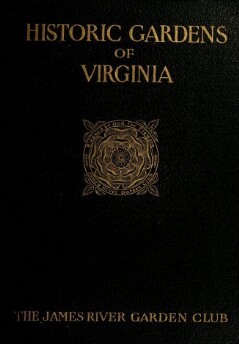Stranica 493 [493]
BANISTER LODGE
HE situation of its three-thousand-acre plantation on
the Banister River, in Halifax County, gave to this
fine brick mansion—built in 1830—its name of
Banister Lodge.
The plan of the house was simple and com¬
modious. An English basement underneath the
entire building, and above, the usual four large rooms, two on
each side of the broad hallway that led to the twenty by twenty¬
hve-foot dining-room in the wing at the rear. Rooms and hall on
the second floor corresponded in size and design with those of the
main floor.
The folding doors between the parlor and library were a novelty
in that part of the State, and people came for miles around to see
them. On the walls of these rooms hung pictures, by famous
artists, of members of the family and connections of William H.
Clark, the owner and builder of Banister Lodge. Amongst the
notable portraits was one of Patrick Henry, who was the grand¬
father of Mrs. Clark (nee Elvira Henry). She herself is repre¬
sented by a Sully portrait, showing her standing at her harp—a
handsome instrument imported from London in 1820.
Mrs. Clark was an unusually brilliant and talented woman.
At the age of sixteen, while visiting in Washington at the home of:
her cousin, William Wirt, Secretary of State under Monroe, she,
by special request, played on her harp at several of the President’s
levees. Besides performing on harp and piano, she also composed
music for both of these instruments. Her artistic accomplishments,
however, did not interfere with her duties towards home and family,
as she was a famous hostess and an exemplary wife and mother.
Her husband, William H. Clark, was a man of great intellectual
force and profound learning, and noted for his active and pro¬
1302]

